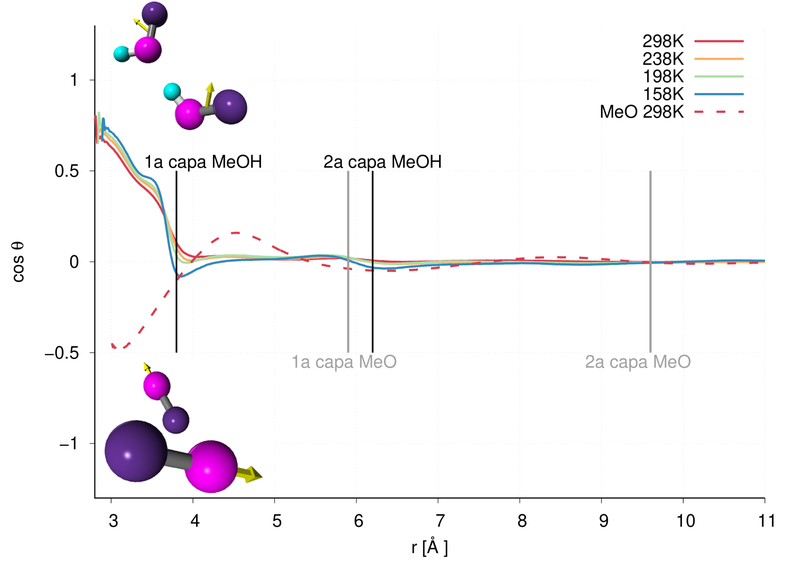Jordi Ortiz de Urbina defends his thesis on orientational properties and local structure in supercooled molecular liquids
Oct 06, 2021
Jordi Ortiz de Urbina defended his thesis directed by Gemma Sesé Castel on September 30, 2021 at the North Campus. Titled “Orientational dynamics and local order in supercooled molecular liquids”, the thesis analyzes the behavior at temperatures close to the vitreous transition thanks to the results obtained in molecular dynamics simulations
The main objective of the thesis is to study, by means of molecular dynamics simulations, the behaviour of two molecular models at different temperatures, approaching the glass transition. One system models methanol and the other differs from the former only in the ability to establish hydrogen bonds. The analysis carried out focused on the reorientational dynamics, the dielectric response and various orientational properties that characterize the local structure.
All the time correlation functions analyzed show a two-stage relaxation, separated by a plateau at the lowest temperatures. Translational relaxation times are longer than reorientational relaxation times in the hydrogen-free system. Molecules with higher translational mobility have also been found to have undergone larger reorientations. Also in this system, the rotational dynamics around a main axis of inertia has been investigated. Rotational diffusion coefficients have been shown to follow a mode coupling law with a critical temperature lower than that corresponding to translational diffusion. Therefore, at low temperatures, when translational dynamics is severely hindered, rotation is still active. The results show that the Stokes-Einstein relation ceases to be satisfied at a higher temperature than the Stokes-Einstein-Debye one.
The anisotropy of rotational dynamics in methanol has also been analyzed, by considering the rotation around the three main axes of molecular inertia. Rotational spectra have been found to contain higher frequency contributions than those detected in the translational spectrum. Its dependence on the number of hydrogen bonds in which the molecules are involved has also been studied. As this number grows, the main peaks move to higher frequencies. As the temperature decreases, no significant change is observed in the frequencies involved, but in the importance of the peaks of the distributions. Different models of rotational relaxation have been analyzed, which lead to analytical relationships between angular momentum relaxation times and reorientation times. The Langevin model satisfactorily reproduces the behaviour of the liquid without hydrogen bonds, even in the supercooled state, while it only reproduces the behaviour of methanol at temperatures close to room temperature.
Hydrogen bonds severely restrict the orientation of molecular dipolar moments of neighbouring molecules, so that both the Kirkwood factor and the dielectric permittivity are lower when the ability to establish them is suppressed. At room temperature, and in the system without hydrogen bonds, the most important contribution to the correlation of the total dipole moment comes from the autocorrelation of the molecular dipoles. On the other hand, relaxation times of both dipole autocorrelations and cross-correlations are similar, and Debye’s model of dielectric relaxation provides good results. In methanol, correlations between orientation of different molecules is much more relevant, and the Davidson-Cole model is more suitable, even at room temperature. At low temperatures, the behaviour of both systems is best represented with the Davidson-Cole model. The longitudinal and transverse components of the dipole moment density as a function of the smaller wave vectors compatible with the size of the system, have allowed to recover the value of the dielectric constant.
Finally, the local structure of both systems has been investigated. The Voronoi polyhedra have been calculated and their topological and metric properties have been studied. This analysis has allowed to quantify the increase in local order in both systems upon cooling: a decrease in the number of different types of polyhedra and an increase in the frequency of the most frequent polyhedra have been encountered.

Share: